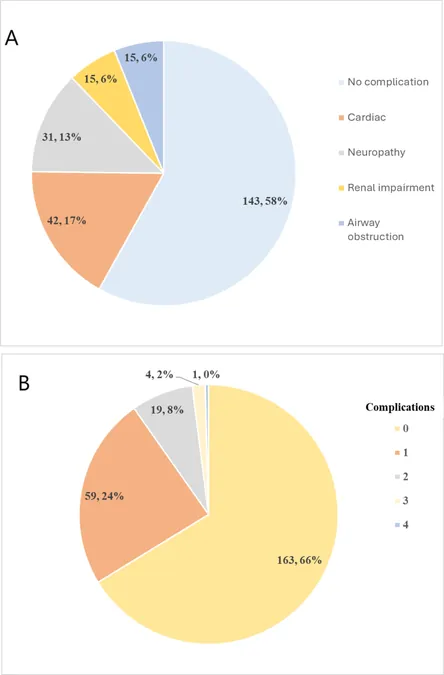
Unmasking Diphtheria's Toll in Nigeria: A Landmark Study Reveals Shocking Mortality Rates and Urgent Calls for Action
2025-01-03
Author: Li
Study Setting and Participant Details
The research took place at Nigeria's sole tertiary health facility equipped with a dedicated isolation ward for infectious diseases, serving a state population of approximately 9.3 million. The study included 246 diphtheria cases across all ages, revealing concerning trends, particularly among children aged 5-10 years.
Hair-Raising Findings: The Mortality Rate
The study reported a staggering in-hospital mortality rate of 23.6%, with 58 patients failing to survive. Predictive factors for death included neck swelling, presence of abnormal chest findings, hypoxemia, and elevated creatinine levels — signs that suggest a dire need for close monitoring and immediate medical intervention.
A Breakdown of Diphtheria's Gruesome Symptoms
Diphtheria manifests primarily through severe respiratory symptoms, notably fever, sore throat, and difficulty swallowing. Close to two-thirds of patients were unvaccinated, emphasizing the direct correlation between vaccination status and severity of illness. Shockingly, about 19% of patients did not receive necessary antitoxins due to supply shortages; this has ulterior layers of ramifications on health outcomes, showcasing the systemic challenges in a healthcare setting already overstretched.
The Role of Laboratory Confirmation
Samples from all patients were analyzed at the Nigeria National Reference Laboratory, confirming a predominance of respiratory diphtheria types. Only a fraction yielded toxigenic strains, highlighting gaps in both diagnosis and treatment that require urgent addressing.
Groundbreaking Insights on Health Policy
The study implores a reassessment of health policies pertaining to vaccination campaigns in Nigeria, where diphtheria immunization rates linger around 50% for eligible children. This inadequacy is fueling the resurgence of diphtheria infections, signaling an urgent requirement for improved vaccination strategies and outbreak responses. Additionally, improved access to diphtheria antitoxin may have played a significant role in reducing mortality rates when compared to previous incidents, suggesting that timely intervention could save lives.
Comparative Analysis: International Context
When compared with other regions, the incidence of diphtheria in Nigeria's study is alarming but offers a unique context. For example, fewer cases were observed during some outbreaks in Canada and India despite the higher total populations. This underlines not only the critical public health infrastructure in question but also the necessity for proactive measures in Nigeria.
Conclusion: A Call to Action
This study serves as an urgent wake-up call for stakeholders at all levels of the Nigerian health sector. Enhanced vaccination strategies, prompt medical interventions, and increased awareness are paramount. Stakeholders must rally together to strengthen the healthcare infrastructure, ensuring that lives are saved and the legacy of diphtheria as a serious health threat is put to rest. The fight against diphtheria isn't just a task for healthcare professionals; it's a collective responsibility that echoes throughout communities, demanding an immediate resurgence of immunization efforts and access to lifesaving treatments. The numbers are startling, and the time is now.



 Brasil (PT)
Brasil (PT)
 Canada (EN)
Canada (EN)
 Chile (ES)
Chile (ES)
 Česko (CS)
Česko (CS)
 대한민국 (KO)
대한민국 (KO)
 España (ES)
España (ES)
 France (FR)
France (FR)
 Hong Kong (EN)
Hong Kong (EN)
 Italia (IT)
Italia (IT)
 日本 (JA)
日本 (JA)
 Magyarország (HU)
Magyarország (HU)
 Norge (NO)
Norge (NO)
 Polska (PL)
Polska (PL)
 Schweiz (DE)
Schweiz (DE)
 Singapore (EN)
Singapore (EN)
 Sverige (SV)
Sverige (SV)
 Suomi (FI)
Suomi (FI)
 Türkiye (TR)
Türkiye (TR)